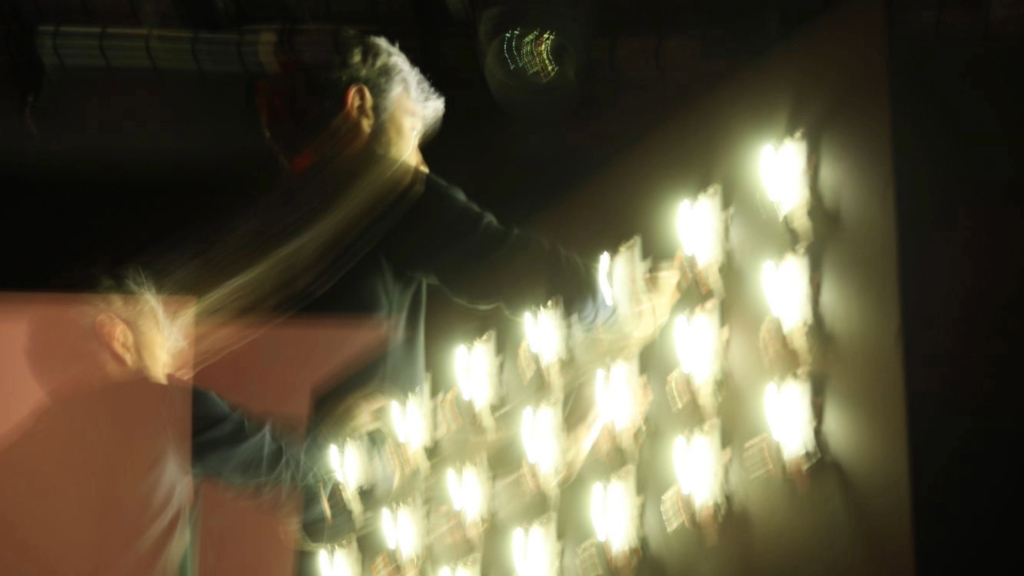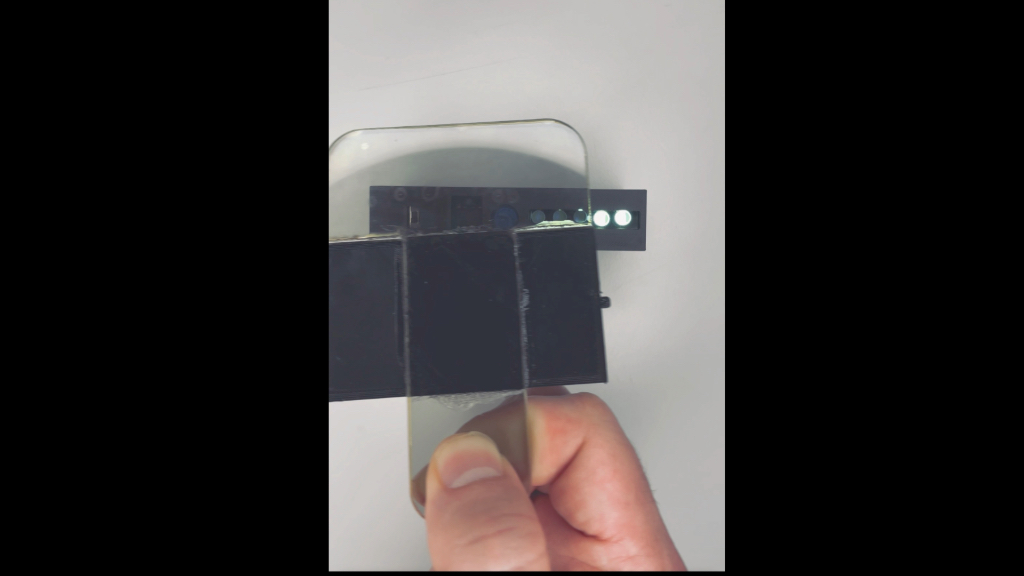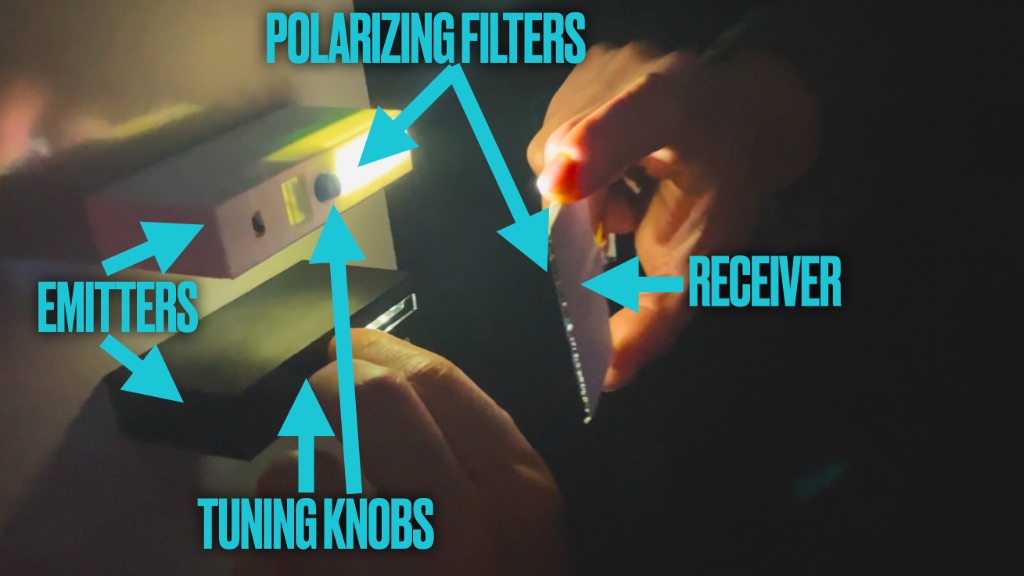The Light Before
Octavio Figueroa Moya
Advisor: Kari Love
A machine that sings with light. A musical instrument. A composition.
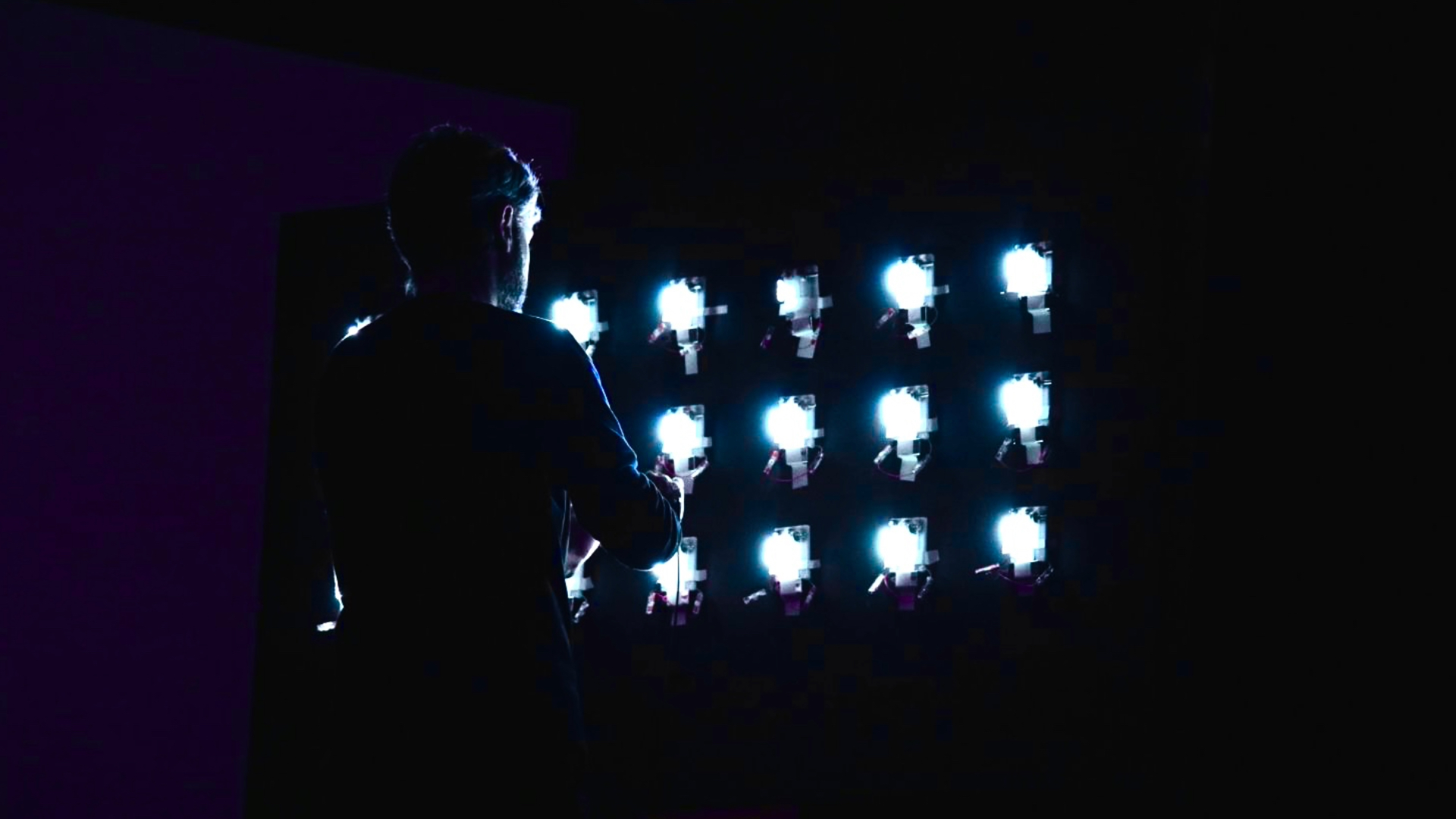
Project Description
The Light Before is a musical work that explores transduction - “transformation of one form of energy into another”. By translating light into sound, transduction serves both as the technical foundation of the piece and as a metaphor for musical expression.
The Light Before has two components:
1. A custom-made musical instrument.
2. A composition and performance created specifically for that instrument.
1. The Instrument - El Humminglou.
The challenge was to translate light directly into sound in a way that reveals a real correlation between the two.
No tricks. No hidden processing. No getting your hands dirty. Working directly with the photons.
Can we replicate audio processes that usually occur as an electric signal by using only the properties of light?
El Humminglou does exactly that.
2. The composition/performance - The Light Before.
One must keep the audience in mind at all times. The intentionality of tech performances is often obscured by technical contrivances and sensory overload. My approach is to keep the audiences attention by making the intentionality of the performance austerely transparent.
The tone of the composition is solemn, almost an epitaph. Transduction is transformation, but something is irremediably lost in that process. The light before is no more. What survived transduction is all we have.
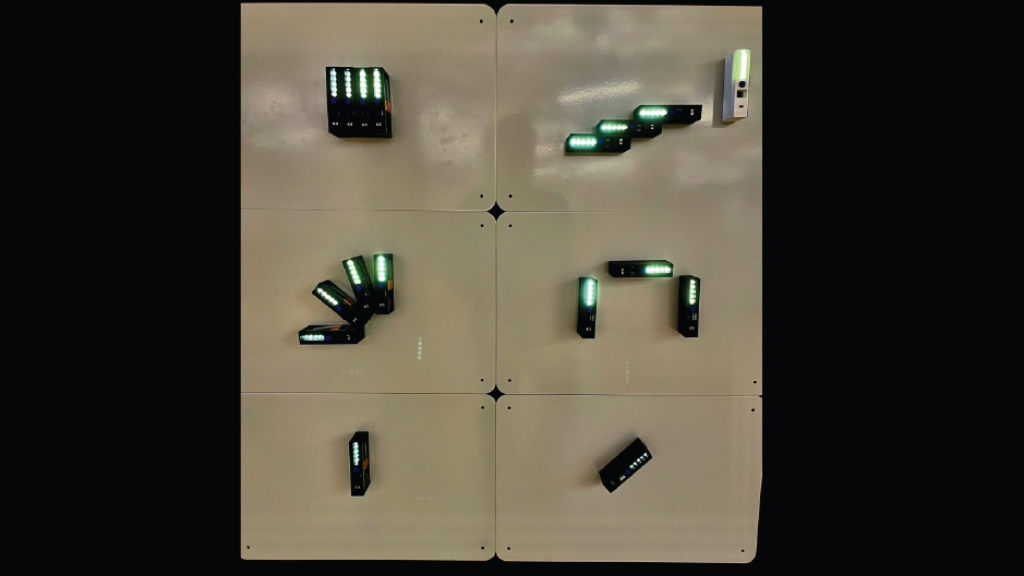
Technical Details
1. The Instrument - The Humminglou.
Essentially it’s an analog synthesizer that uses light as its sound source and control. The frequency of the blinking lights determines pitch, the polarization controls volume, and the relative placement of the lights controls timbre. These three features allow the instrument to be tuned, modulated, and played while staying true to its spirit: no hidden processing, using only the properties of light.
How it works:
Pitch control:
The lights are blinking, way too fast for our eyes to perceive. But the receiving solar panel can detect that flicker, and as a result it produces an oscillating voltage, which is then sent directly into a guitar amplifier. Want to create an A note (440Hz)? Just make the LED blink 440 times per second. That’s it. Pure transduction, raw conversion of energy: light becomes sound.
Volume control:
Both the emitters and receivers are covered with polarizing filters. This means that if the emitter and receiver have the same orientation light will pass through. If they have opposite orientations, light will be blocked. This allows you to turn notes on and off just by changing the orientation of the emitter and/or receiver. It also means that you can control the volume of each emitter just by tilting it.
Timbre control:
The emitters are magnetic, which allows them to be rearranged in any spatial configuration. They can be separated to produce distinct individual notes, or clustered together to make more noisy abstract soundscapes. When the emitters are close to each other, their lights will also interfere with each other. This destructive interference works as modulation, allowing control of timbre and texture of the sound.
How it’s made:
-Custom PCBs featuring five LEDs controlled by an adjustable 555 timer IC in astable mode.
-3D modeled and 3D printed enclosures with embedded magnets.
-Hand-held solar panels soldered to TS audio cables.
-Polarizing filters covering both the LEDs and the solar panels.
-Two guitar amplifiers.
2. The composition - The Light Before
The style of the piece is of baroque inspiration. More specifically, it draws from early 18th century Sarabandes. Not exactly what I listen to in my own time but it serves a specific purpose. It’s written as a two-voice polyphonic composition so that each of my hands plays one of the melodies. This allows the audience to follow along intuitively without the need to delve into the technical details. They can see and understand the relationship between my movements and each note. In this style every note counts, which makes the intentionality of the performance transparent and self-explanatory.
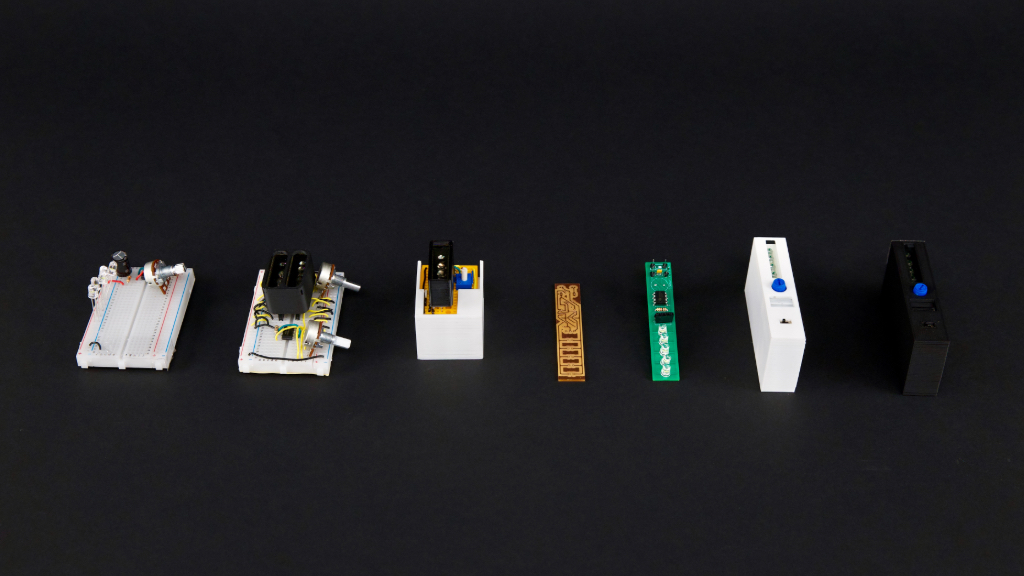
Research/Context
The idea of pure transduction from light into sound is the core concept of the project. Previously I had attempted other approaches to translate light into sound with digital sensors and cameras. However, I always felt it wasn't a real translation, but an interpretation, or even worse, a simulation.
For instance, one may arbitrarily decide that the color red would trigger the note C, this does not reflect any real correlation between light and sound.
Furthermore, the sluggish nature of digital processing, with its lag, felt inexpressive and disembodied.
There is always something lost in transformation, but what survives this transition from one medium to the other is the essence of communication. In the same way, a musical piece transduces the feeling of the composer/performer to the audience, who will absorb it and transform it according to their individual emotional and cognitive makeup. Some of the specifics are lost, filtered by the listener's subjectivity, but ideally some form of the original essence is communicated.
